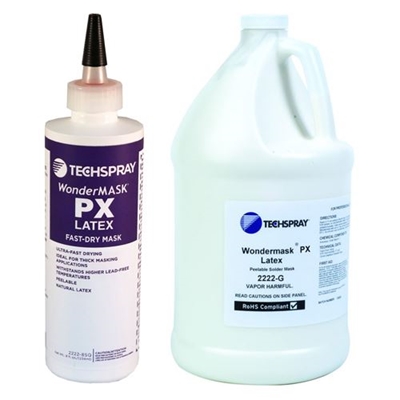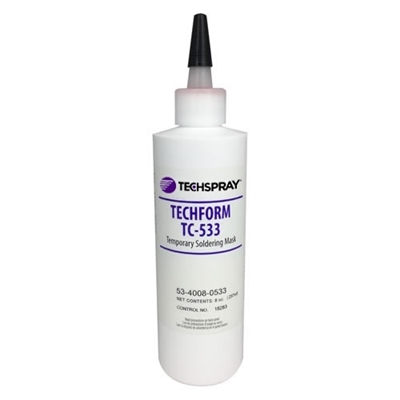Using a temporary solder mask for anodizing and plating processes can be a useful technique to protect specific areas of a metal surface from being coated or plated. The solder mask acts as a barrier, preventing the anodizing or plating solutions from reaching the masked areas.
Plating and anodizing are two surface treatment processes used to enhance the properties of metals, such as improving corrosion resistance, appearance, and durability. While they are both surface coating techniques, they differ in terms of the materials involved and the specific processes employed.
Electroplating
Electroplating, also known as plating, involves depositing a layer of metal onto the surface of a substrate material through an electrochemical process. The goal is to create a thin, adherent, and uniform coating of metal. Common metals used for plating include gold, silver, nickel, chromium, zinc, and copper.
A plating bath or electrolyte solution is prepared, which contains metal salts specific to the desired plating material. The bath also includes various additives to control the plating process and improve the quality of the coating.
The substrate, known as the cathode, is immersed in the electrolyte bath along with an anode made of the plating metal. When an electric current is applied, metal ions from the anode are reduced and deposited onto the cathode surface, forming a layer of the desired metal.
Anodizing
Anodizing is an electrochemical process that creates a controlled oxide layer on the surface of a metal, primarily aluminum and its alloys. This oxide layer not only enhances the metal's corrosion resistance but can also provide decorative and coloring effects. Here are the key steps involved in anodizing:
- Metal is immersed in an electrolyte bath containing a specific acid, such as sulfuric acid, which acts as the electrolyte.
- The bath is maintained at a controlled temperature and current density.
- When a direct electric current is passed through the electrolyte, oxygen ions are generated at the anode (the metal being anodized), which reacts with the metal surface to form an oxide layer.
- The thickness and properties of the oxide layer can be controlled by adjusting parameters like voltage, current density, and bath composition.
Additional processes such as dyeing, coloring, or coating may be employed to achieve specific aesthetic or functional requirements.
Both plating and anodizing processes offer unique advantages and are extensively used in various industries, including automotive, electronics, aerospace, and jewelry manufacturing, among others.
Typical Masking Methods
When it comes to plating and anodizing processes, various materials can be used for masking. The choice of masking material depends on factors such as the specific process, the substrate material, the desired masking level, and the chemicals involved.
Here are some commonly used masking materials:
- Rubber - Silicone or synthetic rubber materials are frequently used for masking purposes. They are flexible, offer good chemical resistance, and can conform to complex shapes. Rubber plugs, caps, and tapes are commonly used for localized masking.
- Tape - Different types of tape, such as high-temperature masking tape, electrical tape, or specialty tapes, can be used for masking. They are easy to apply and remove, making them suitable for various masking applications.
- Wax - Wax materials can be used for temporary masking. They are typically applied in liquid or solid form and can be peeled off after the plating or anodizing process. Wax provides good coverage and can be used for irregularly shaped or delicate parts.
- Lacquer or resist coatings - Specialized lacquers or resist coatings can be applied to the desired areas, creating a barrier against plating or anodizing chemicals. These coatings can be air-dried or heat-cured, providing effective masking for more intricate designs.
- Plastic films and sheets - Thin plastic films or sheets, such as polyethylene or polyvinyl chloride (PVC), can be cut or molded to cover specific areas. They are suitable for larger areas or when a more rigid masking material is required.
- Metal plugs and caps - Metal plugs, caps, or fixtures made from materials like stainless steel or brass can be used for masking specific holes or threaded areas. They offer durability and resistance to plating or anodizing chemicals.
- Liquid latex - Liquid latex, also known as latex rubber, can be brushed or sprayed onto the areas that require masking. Once dried, it forms a flexible and peelable mask that can withstand plating or anodizing processes.
It's important to note that the selection of masking materials should consider the compatibility with the specific process and chemicals involved. Proper surface preparation and adhesion testing should be performed to ensure the masking materials adhere well and provide effective protection during plating or anodizing.
Masking With Liquid Latex Mask
Here's a general process for using a temporary solder mask for anodizing and plating:
- Prepare the metal surface - Ensure that the metal surface is clean, free from contaminants, and properly prepped for anodizing or plating. This typically involves cleaning, degreasing, and possibly etching the surface to promote adhesion.
- Apply the temporary solder mask - Select a suitable temporary solder mask material that is resistant to the anodizing or plating solutions you'll be using. Some common options include solder resist films, liquid photoimageable solder masks, or temporary masking compounds. Follow the manufacturer's instructions for application, which may involve spraying, brushing, or screen printing the solder mask onto the desired areas of the metal surface.
- Cure the solder mask - Depending on the type of solder mask used, you may need to cure it using heat or UV light, or simply allow it to air-dry. Follow the manufacturer's recommendations for the specific curing or drying process.
- Perform anodizing or plating - Proceed with the anodizing or plating process as usual, following the appropriate techniques and parameters for your specific application. The areas covered with the solder mask will be protected from the anodizing or plating solutions, ensuring they remain uncoated.
- Remove the solder mask - After the anodizing or plating process is complete, it's necessary to remove the temporary solder mask. The removal method will depend on the type of solder mask used. Some solder masks can be peeled off, while others may require a solvent or chemical stripping process. Again, refer to the manufacturer's instructions for the recommended removal procedure.
- Clean and finish the surface - Once the solder mask is removed, thoroughly clean the surface to remove any residues or contaminants. Depending on your requirements, you may also need to perform additional finishing steps, such as polishing or coating, to achieve the desired final appearance and properties.
Remember to always follow safety guidelines and proper handling procedures when working with anodizing or plating solutions, solder masks, and any associated chemicals. It's also a good practice to test the entire process on a small sample or scrap piece before proceeding with your final workpiece to ensure the desired results.
WonderMASK Natural Latex Peelable Masks
Natural latex peelable masks, like WonderMASK PX and Techform TC-533, are recommended because of their chemical resistance and high tensile strength, which can avoid breakage when removing.
WonderMASK PX is a temporary, peelable, latex mask designed to dry in half the time of standard latex masking material. It both heat and chemically resistant, and ideal for applications when thick application is required.
Techform TC-533 Peelable Mask is a high-temperature flexible solder masking compound specially formulated of natural latex rubber. It is also heat- and chemically-resistant.
Techspray’s lab is available to help you qualify products, establish your masking process, or diagnose masking issues. For more information, go to www.techspray.com or call 800-858-4043.







